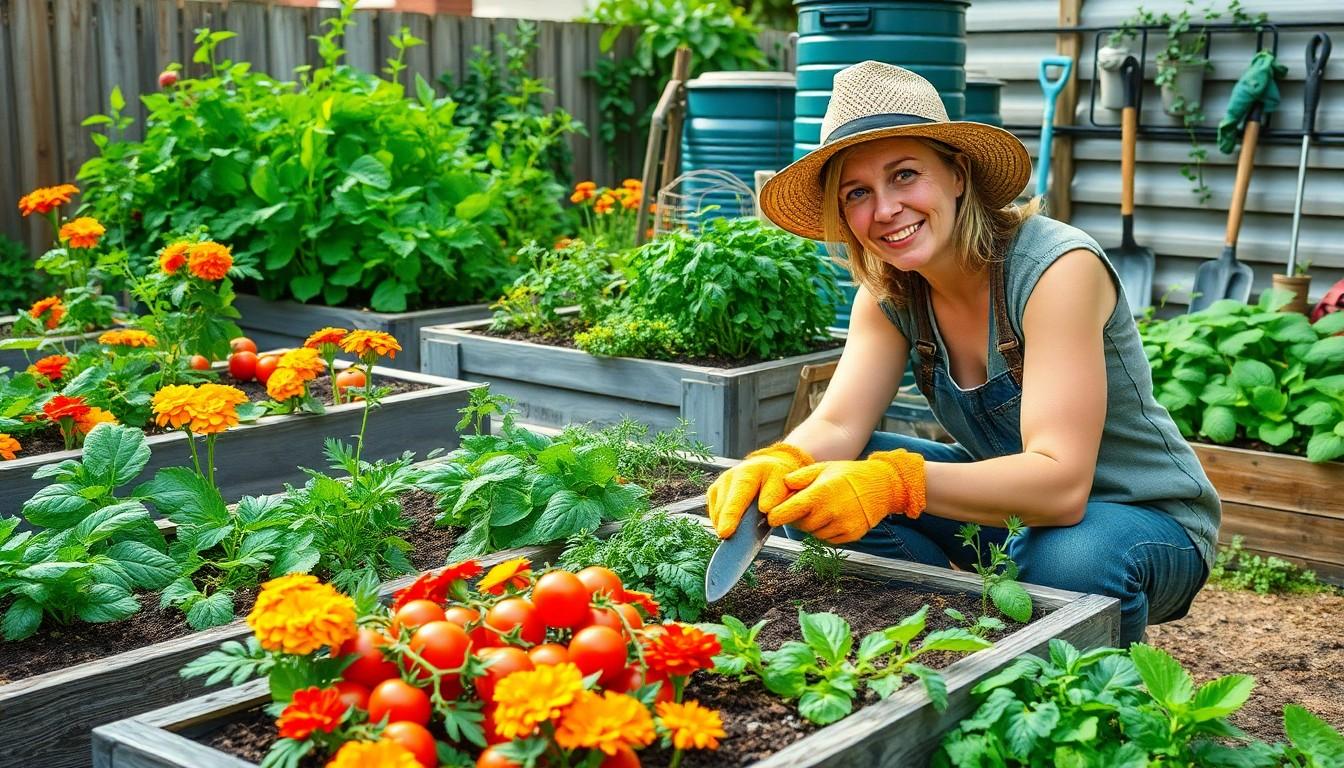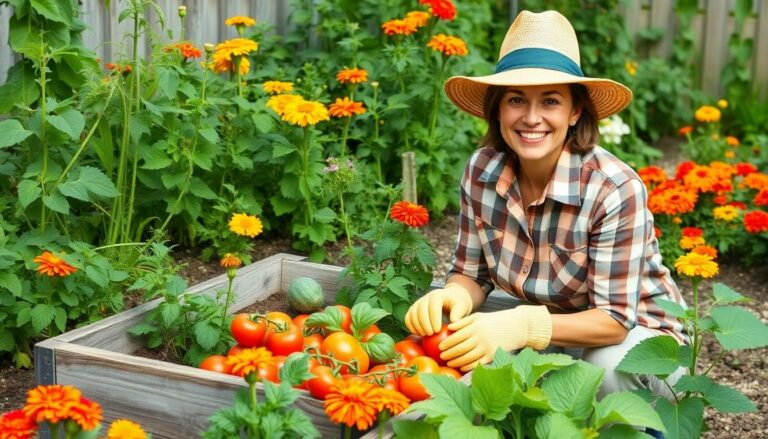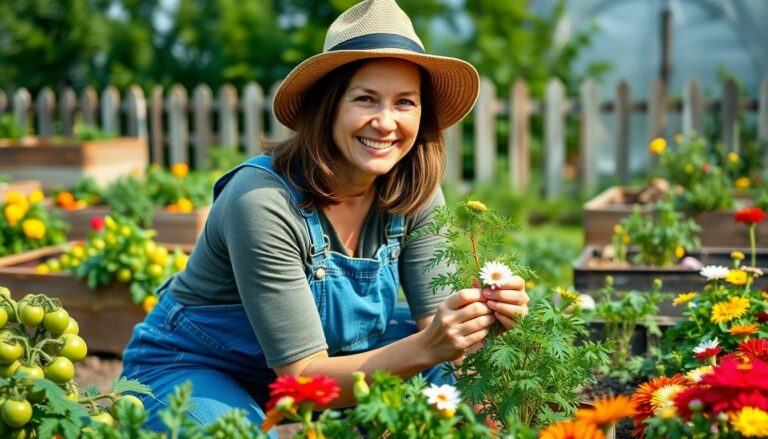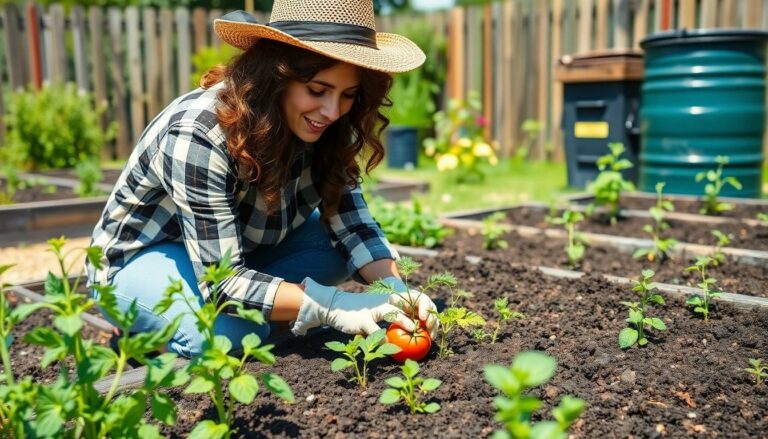Imagine stepping into your backyard and feeling like you’ve entered a vibrant paradise, where fresh veggies and fragrant herbs are just a few steps away. Next-level gardening isn’t just about growing food; it’s about transforming a patch of earth into a self-sustaining homestead that’s as productive as it is delightful. Whether you’re battling pesky pests or trying to figure out how to keep those tomatoes from staging a coup, this journey is packed with tips and tricks to elevate any garden.
Next Level Gardening Homestead
Next-level gardening homestead represents an evolution in backyard cultivation. This concept integrates efficient techniques to maximize yield, while minimizing reliance on external resources. Emphasis lies on creating a self-sustaining ecosystem within the garden’s confines.
A diverse range of plants, including vegetables, herbs, and fruits, enhances biodiversity. Growing companion plants supports natural pest control and improves soil health. Establishing raised beds further optimizes space and provides better drainage, crucial for robust plant growth.
Utilizing organic methods contributes to sustainability. Composting kitchen scraps and yard waste returns nutrients to the soil, promoting a closed-loop system. Implementing rainwater harvesting systems assists in water conservation and reduces expenses.
Proper planning involves selecting the right plants for the local climate and soil type. Crop rotation ensures soil fertility, preventing depletion of essential nutrients. Regularly monitoring for pests and diseases leads to quicker responses, safeguarding plant health.
Integrating technology offers modern solutions to common gardening challenges. Soil sensors provide real-time data about moisture levels, guiding irrigation. Garden management apps help track growth progress and organize planting schedules.
Next-level gardening homestead fosters community engagement. Sharing produce encourages collaboration and strengthens local ties. Workshops on sustainable practices further promote knowledge sharing and empower individuals to adopt these techniques.
This approach not only supports personal health but also contributes to environmental resilience. Engaging in next-level gardening inspires others to cultivate their own productive spaces, forming a network of thriving homesteads.
Key Concepts of Next Level Gardening
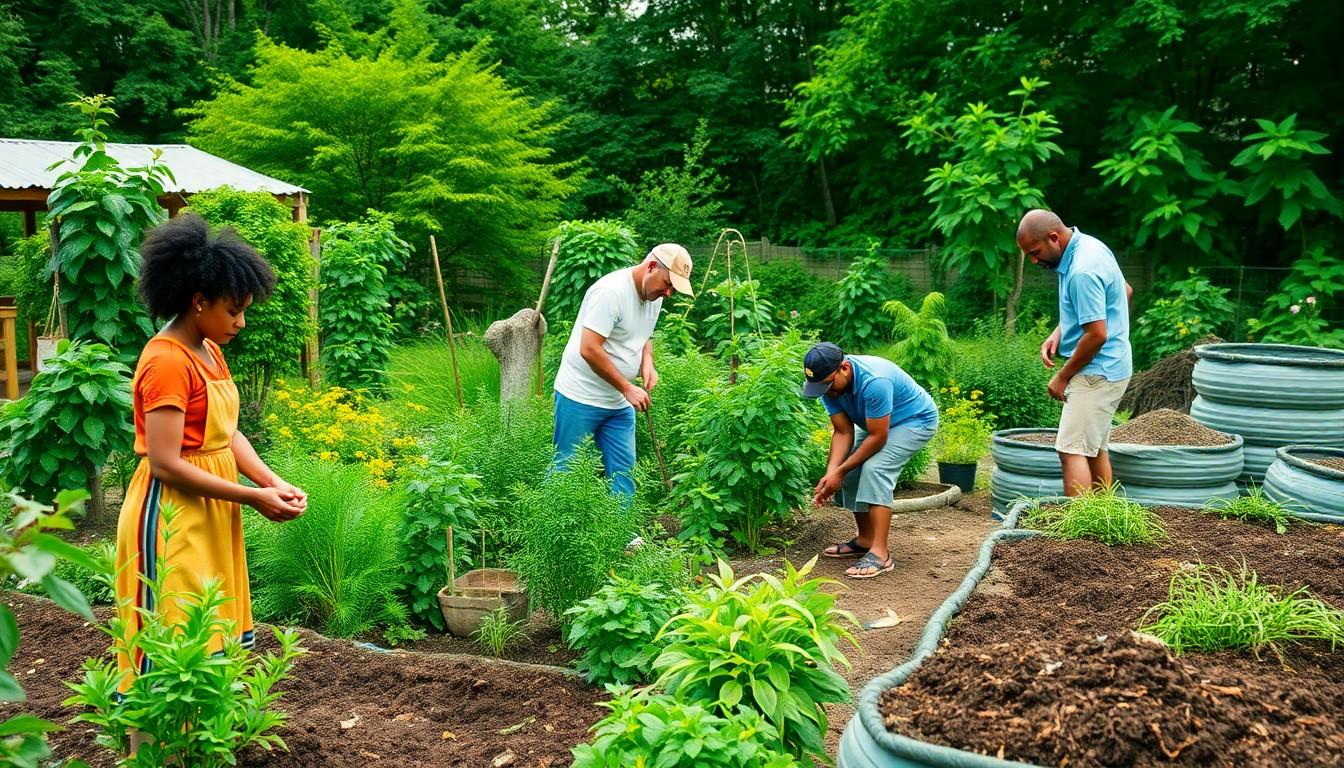
Next-level gardening focuses on creating a self-sustaining, productive homestead. It emphasizes innovative techniques and community involvement.
Sustainable Practices
Sustainable practices form the backbone of next-level gardening. Utilizing organic fertilizers helps maintain soil vitality. Mulching conserves moisture and protects plants while reducing weeds. Crop rotation prevents nutrient depletion and disrupts pest life cycles. Implementing companion planting maximizes space and enhances biodiversity. Rainwater harvesting systems collect water for irrigation, lowering dependence on external sources. Integrating native plants supports local wildlife and pollinators, fostering a balanced ecosystem. Each practice not only reduces environmental impact but also promotes long-term garden health.
Permaculture Principles
Permaculture principles guide the design of efficient gardens. Zones in permaculture focus on arranging elements based on their use and care frequency. Using perennial plants reduces replanting and promotes stability. Working with nature instead of against it fosters resilience in the garden. Observing and interacting with the environment encourages adaptability. Each system’s element serves multiple purposes, enhancing productivity. Creating closed-loop systems minimizes waste while maximizing resources. Emphasizing these principles leads to sustainable and thriving homesteads.
Essential Tools and Equipment
Successful next-level gardening requires specific tools and equipment. Utilizing the right tools streamlines gardening tasks and enhances productivity.
Must-Have Gardening Tools
A sturdy shovel aids in soil preparation and digging. Quality pruners provide clean cuts for healthy plant growth. Trowels allow for precise planting and transplanting of young plants. A garden fork breaks up compacted soil and incorporates organic matter. Gloves protect hands from thorns and soil exposure while working. Watering cans or hoses ensure proper moisture for plants. Each tool plays an essential role in enhancing gardening efficiency and effectiveness.
Innovative Gardening Technologies
Integrated soil sensors monitor moisture levels and nutrient content, guiding watering practices. Raised bed kits promote efficient use of space and improve soil quality. Automated irrigation systems reduce water waste and ensure consistent hydration for plants. App-based garden management tools offer reminders and tips, making it easier to maintain schedules. Drones assist in monitoring garden health, detecting pests, and identifying areas needing attention. These technologies enhance the gardening experience and support successful homesteading efforts.
Plant Selection for a Homestead
Selecting the right plants is crucial for a successful homestead garden. Prioritize seasonal growth and compatibility with local climates.
Seasonal Vegetables and Herbs
Choose vegetables that thrive during specific seasons. For example, tomatoes and peppers flourish in summer, while kale and carrots do well in cooler months. Encourage continuous harvest by staggering planting times. Grow fresh herbs like basil and parsley alongside vegetables for added flavor and utility. Adapt selections based on hardiness zones to ensure plants survive local weather conditions. Regularly update the garden with different varieties to maximize yields and maintain interest throughout the year.
Companion Planting Strategies
Implement companion planting to enhance growth and deter pests. Pairing marigolds with tomatoes repels harmful insects while boosting tomato health. Incorporating beans can fix nitrogen in the soil, benefiting leafy greens nearby. Utilize combinations such as onions and carrots, which do not compete for nutrients. These strategic alliances create a balanced ecosystem, ultimately leading to a more productive garden. Monitoring plant interactions helps identify combinations that thrive, ensuring a healthier homestead.
Maintenance and Care Techniques
Effective maintenance and care are crucial for a thriving next-level homestead garden. Prioritizing soil health, efficient water management, and organic practices enhances productivity while promoting sustainability.
Soil Health and Fertility
Healthy soil forms the foundation of any successful garden. Regularly testing soil for pH levels and nutrient content informs necessary amendments. Organic compost provides essential nutrients, improving soil structure and enhancing microbial activity. Cover crops like clover and vetch contribute nitrogen back into the soil while preventing erosion. Adding mulch retains moisture and suppresses weeds, creating a favorable environment for plant growth. Practicing crop rotation prevents nutrient depletion and reduces pest pressure. Maintaining healthy soil ultimately strengthens plants, leading to higher yields.
Water Management Strategies
Efficient water management techniques ensure plants receive adequate moisture without waste. Implementing drip irrigation systems delivers water directly to plant roots, minimizing evaporation. Rainwater harvesting allows gardeners to collect and store runoff for dry periods, reducing reliance on municipal sources. Employing mulch helps retain moisture while also moderating soil temperature. Monitoring plant moisture needs through soil sensors aids in timely watering decisions, conserving precious resources. Adjusting watering schedules based on seasonal conditions maximizes efficiency, supporting robust plant health.
Practices and Innovative Techniques
Next-level gardening offers an exciting pathway to transform any backyard into a thriving homestead. By embracing sustainable practices and innovative techniques, individuals can cultivate a diverse ecosystem that not only supports personal health but also contributes positively to the environment.
With careful planning and the right tools, anyone can overcome common gardening challenges and achieve a bountiful harvest. Engaging with the community further enhances this journey, fostering collaboration and shared knowledge.
Ultimately, next-level gardening empowers people to create productive spaces that inspire others to join in the movement toward self-sufficiency and environmental resilience.

